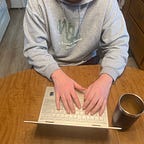Discussing the “Bonk”
What is it, tips to avoid it, and why it is important to “feel” it
In training recently for a half-marathon, I knew I had to “feel it.”
For many of us I don’t even need to say much more: to “feel it” is that sensation on a long run when you feel “the bonk.” For all of us that may mean different things; tired legs, nausea, maybe light-headedness, and even just a general sense of being “out of it.” It is that moment in an endurance run (in my training it usually is after an hour of running at a decent pace) when you wonder if it is a good idea to continue.
By experiencing that sensation, and by knowing that at the half-marathon distance, I was going to feel that feeling, I wondered why it happens. I also, of course, wanted to do my best to avoid “bonking.”
Having run now for close to thirty years (man I’m old) I know that bonking can occur at different times, based on my current fitness level. Unfortunately, for this particular race I was training for I expected it to happen near the end or at/around mile 12. But my training runs told a different story: anywhere between 80–85 minutes in, I could expect the bonk.
Now, having finished the race and smashing my sub-2-hour half-marathon goal, the bonk visited me on a highway overpass at around mile 11.5.
